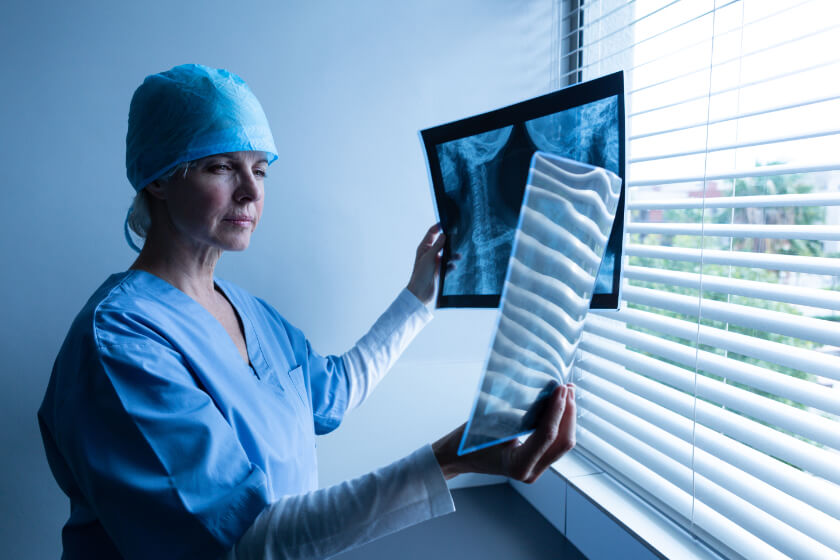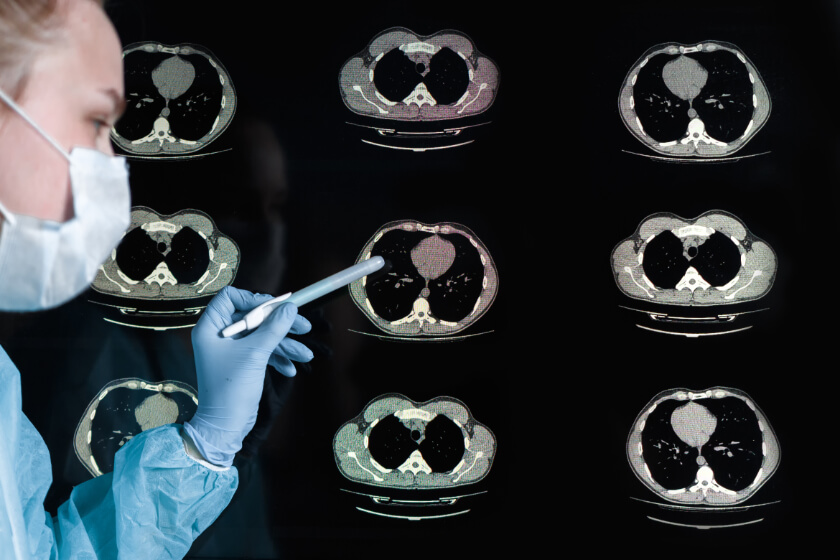
How Do Doctors Diagnose Bone Cancer?

This year, doctors will diagnose an estimated 3,910 people in the United States with bone cancer, according to the American Society of Clinical Oncology (ASCO). There are several types of bone cancer, and each type looks and acts a little differently. Treatment can vary depending on the type of bone cancer a person has and how far the cancer has progressed, so it is very important that doctors get an accurate diagnosis. Diagnosing bone cancer involves several steps.
Cancer is a condition in which abnormal cells grow and divide rapidly. Over time, these abnormal cells disrupt the function of healthy cells. Cancer cells also spread to different parts of the body. Doctors “stage” cancer by describing how far the abnormal cells have spread. In stage I cancer, for example, the abnormal cells are found only at the site of origin. By stage IV, the abnormal cells are found in tissue far from the original site. Doctors describe this spread as “metastasis.”
As its name suggests, bone cancer is a condition in which abnormal bone cells grow out of control and spread. Abnormal bone cells can be found in the lungs, liver, brain, or other places far from the original site.
Doctors characterize bone cancer as being either primary or secondary. Primary bone cancer starts in a bone and can spread to other organs. Secondary bone cancer starts in another organ and spreads to the bone.
Like other types of cancer, bone cancer responds to treatment more readily when it is in the early stages, before it has spread to other parts of the body. For the best outcome possible, it is important to diagnose bone cancer early. It is also important to determine the type of bone cancer a person may have.
Types of Primary Bone Cancer
Osteosarcoma
Osteosarcoma is the most common type of primary bone cancer. It typically starts in young people ages 10 to 30, but I in 10 cases of osteosarcoma occur in people who are over the age of 60; it is rare in middle aged people, and is more common in males than in females. Osteosarcoma most often develops in the bones of the arms, legs, or pelvis.
Ewing sarcoma
Ewing sarcoma is the second most common type of primary bone cancer in children, teens, and young adults, and is the third most common type of primary bone cancer overall. The most common sites for this type of bone cancer are the bones of the pelvis, ribs or shoulder blades, spine, or long bones of the legs.
Chondrosarcoma
Chondrosarcoma can start in any place there is cartilage, which is a type of connective tissue. Most types of chondrosarcomas start in the pelvis, arms or legs, although some start in the trachea, larynx, chest wall, shoulder blades, ribs, or skull.
How Doctors Diagnose Bone Cancer
Doctors perform a number of tests to diagnose bone cancer, and to learn if the abnormal bone cells have spread to other parts of the body. They rarely used blood tests to diagnose bone cancer, as this condition does not usually cause abnormal blood test results.
In many cases, doctors use x-rays and other imaging tests to diagnose bone cancer. These imaging tests create pictures of the bones that a doctor can use to spots signs of this disease.
Imaging tests for bone cancer include:
X-rays – creates images using small amounts of radiation; diagnosis of bone cancer often begins with an x-ray
Bone scan – a healthcare professional injects a small amount of a radioactive tracer that collects in the bones then uses a special camera to record images of the bones; healthy bones appear lighter in the images, while cancer or broken bones look darker
Computed tomography (CT) – a computer combines a series of x-rays into a 3D image; doctors often use CTs to determine the size of the bone cancer tumor
Magnetic resonance imaging (MRI) – uses magnetic fields, rather than x-rays, to create images; doctors use the images created by MRIs to determine the size of the tumor, check for tumors in nearby soft tissue, or to serve as a roadmap to help an orthopedic surgeon perform the best surgery possible
Image-guided biopsy – ultrasound and fluoroscopy, which is like a “live action x-ray”, helps doctors locate and retrieve bone cells and tissue for assessment in a medical laboratory
Doctors do not usually use all of these imaging tests to diagnose bone cancer. To choose a diagnostic imaging test, they typically consider a variety of factors, such as:
- The type of cancer they suspect
- The patient’s signs and symptoms
- The patient’s age and health history
- The results of other tests
For more information on how doctors diagnose bone cancer, consult with your primary care physician or radiologist.




